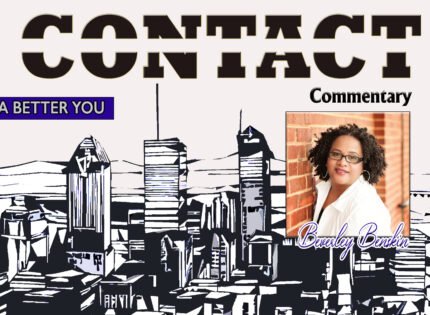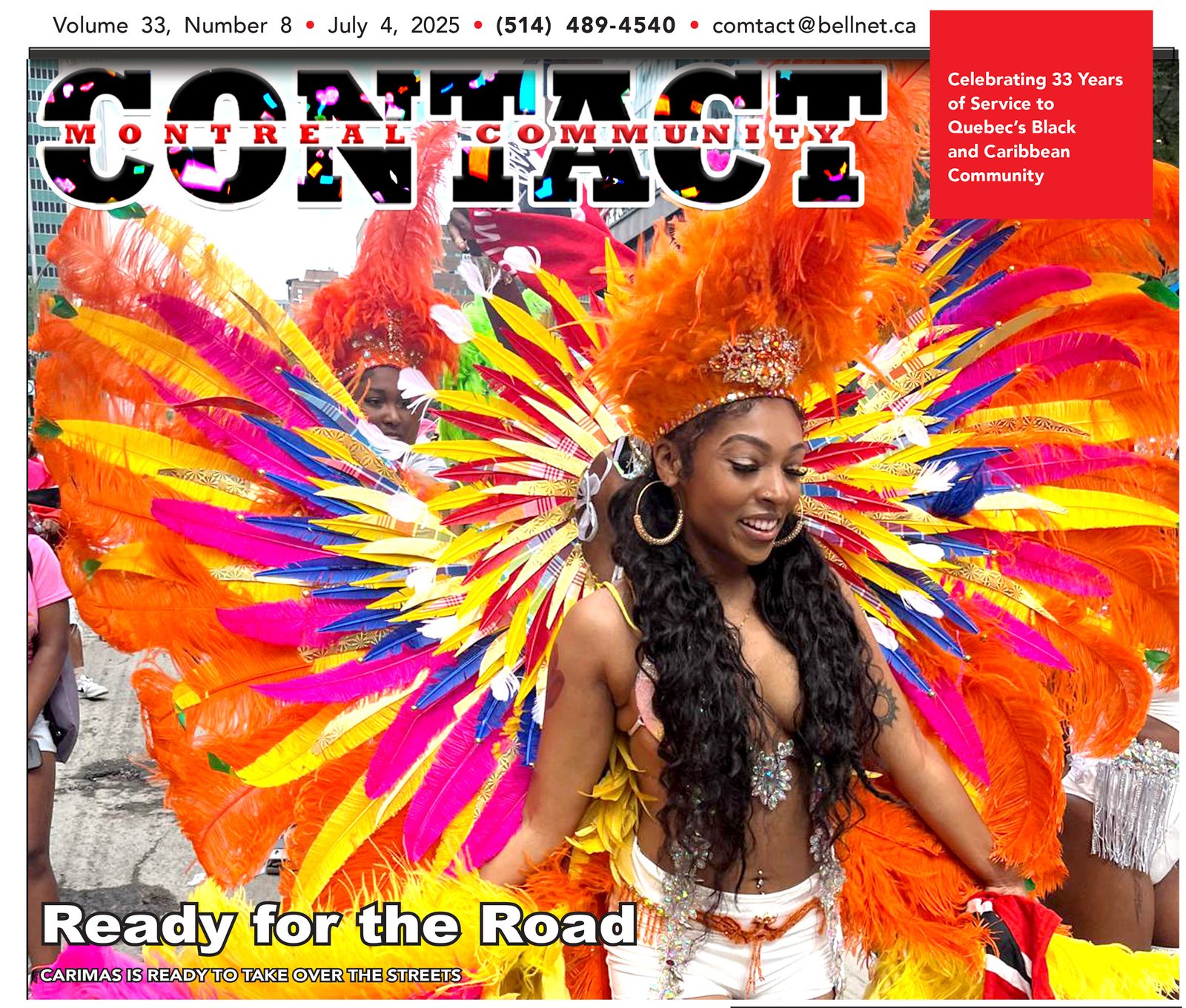A social analysis and critical perspective on organizing in the Black communities of Montreal
By Clarence S. Bayne
A social activist and active local politician in frustration once said to me, ” Trying to work with the Black communities is like walking through a mine field.”
Some of us might take exception to this statement and reach for a defensive weapon which Yvonne Sam has recently, and aptly, described in a Community Contact article as “denial.”
But some of us who refuse to be ruled by fear live this experience constantly. The Black community of Montreal has developed a tradition of criticism effectively presented and referenced in Dr. Dorothy Williams, PhD thesis in Library Science (McGill University).
Much of it is scholarly and in many ways brilliant, but a great deal of it has taken the form of negative under-researched affectations by individuals of their experiencing of life and their expressions of hopelessness. The mix of social medicines offered has been administered to us in doses prescribed in bulletins, journals, pamphlets, and essays, spanning the last sixty-five years: Contrast, Expression, Uhuru, The Black I, Umoja (NBCC), the New World essays of the McLaughlan group, Focus Umoja (BCCQ), The Caribbean News, The Mirror, Kola Magazine, the NCBEC News Bulletin, Community Contact, and several theses at McGill and Concordia Universities.
If one were to conduct an analysis of the subjective well-being of the Montreal Black Community what picture would we get from our media: the greatest source of expressions of negative feelings about life in the community would come from the barbershop discourses of the late Bob White’s Ways and Means Committee (Community Contact) compared with the very guarded optimism of Novel Thomas’s articles, the exhortations of Yvonne Sam for us to do better, and the un-researched articulations of alternative truths featured for some opinion writers.
As a general observation “on and off the street,” it amazes me how collective we can agree on what ails us as a racialized minority that is discriminated against, profiled and ignored in this society, yet spend endless time fighting about who should or should not speak to the issues, lest somebody should be remembered for a contribution.
“He does not speak for me” is a tune played back a million times carried on the voices of Blacks in denial mode and as visitors to the offices and runners in the corridors of mainstream society. At the end of the day they have starved the collective soul that they feed on the crumbs they have scrounged as a reward from the rich man’s table. Or are ushered disgruntled to a hidden seat in the kitchen at a celebration at the Great White House on the Hill that overlook the indigenous land.
We invent freedom codes such as the messages in the Black Theatre Production of George Boyd’s “Wade in the Water” and Djanet Sears’ “Adventures of a Black Girl in Search of her God.”
We have left our footsteps in the sand paths to freedom out of Pharoah’s camps, only to see some of us turn that freedom into the clawing of crabs in a bucket. Yes! Dr. Spence, I have read your article in Community Contact about crabs in a bucket. And I fully agree with you that the analogy does not fit the human condition. For, according to you, crabs may create the illusion that their formations in the bucket is a drag down, when in fact they are a supporting network of nodes communicating to the end purpose of getting a critical number of the crabs to the top and over. Our crabs are levelers that practice an unscientific socialism that says we are all in it together and no one shall escape.
The patterns of the reaction [behaviours] of some of us to adversity is one of hopelessness: the abandonment of positive collaboration and cooperation in the face of threats to our survival and restrictions to our pursuit of individual happiness.
I have been flattered and at the same time puzzled by calls urging me to issue a public response on issues that in my opinion were being effectively addressed by another Black social entrepreneur and critic. Let me state clearly, the purpose of the request was not to create a social contagion that would hasten corrective action, but rather that that particular Black social critic was deemed not to have the social demanded to represent my caller. I was asked, “Why do you allow such persons to speak for us?”
On another occasion, while working on a contract at a government ministry in Ottawa I was shocked by witnessing competitive rivalry at it worse. Unfortunately, it involved the Black community of Montreal.
An officer with whom on occasion I had lunch asked me to come to his office to help him deal with a problem that persisted over a number of weeks. He was receiving calls from a source in the Black community in Montreal reporting or claiming that the government was giving funds to organizations that were run by inefficient leaders that used the funds for their private affairs.
Now, this is possible in even the White mainstream. Some of them have been sentenced to jail for this. But, the problem here was neither that ministry, nor any other for which it could be determined at the time, provided funds to those organizations. Certainly not in the incredible amounts that the caller claimed.
Finally, the caller suggested that if the government were serious about the development of the Black community, that it would work more closely with an organization such as his that he claimed understood the community best and ran a responsible and stable financial administration.
Should we, then, be surprise that a general reason for rejection of funding to Black organizations by government agencies is the belief that they lack financial and administrative stability? We complain about being ignored in Canadian society, but it trivializes the contributions of past generations of Blacks when government agencies receive or read blogs in public media that make unsubstantiated claims that Black leaders use the profits from the fundraising dance to finance their holidays in the Caribbean.
We joke about it at the dinner table and at parties, offering tongue-in-cheek advice: “Never schedule your vacation for after the Association dance or fundraiser.”
But it is damaging, and sadly unfortunate, especially when a casual review of the attendance at many of these events support the balance sheet view that these events run deficits that are frequently paid by donations from the Board and loyal members.
After 40 years of this type of leveling/drag down competitive strategies, many of the organization leaders and democracies’ watchdogs that engage in this type of activity fail to understand that governments and other public institutions are much more sophisticated. They have developed their independent methods for ensuring accountability and measuring the efficacy of the project objectives that they fund.
They employ evaluation methods that are combinations of performance and financial audits associated with signed contribution agreements that include payback clauses for breach of contract clauses. Most frequently, the organization is restricted to expenditure limits on an item-by-item basis. Yet these rivals continue the tradition of tarring and feathering, and the unscientific socialism of a culture of desperate crabs in a bucket.
Why?
I liken this to the “every-man-for-himself” and “dog-eat-dog” behaviours that take over when the finish line is in sight in marathon racing or the Tour de France.
It is not unusual in the Tour de France to see a breakaway group cooperate and collaborate to maintain a trailing distance between themselves and the pack, but break down into a selfish state of each man for himself when the finish line is in sight and the rewards of fame and fortune are limited to only the one man that wins the race.
It is not unlike the selfishness we see displayed when one government administration at the end of its mandate empties the coffers so as not to subsidize the legacy of the next government. It is a human condition that partly explains why there are no instances in the Black Community of Montreal where organizations and their leaders have been able to stay united in the face of dwindling resources for infra structure creation or the support of capacity asset building around centrally controlled (financial and managerial) community organizational architectures. The closest we have come to this is in the periods 1902 – 1950 and 1970 – 1992.
In the first period the community was organized around the Union United Church and the Negro Community Center (NCC). In the second period the Community was organized around the Black Community Council of Quebec (BCCQ).
However, the failure of the BCCQ to sustain a centrally-controlled permanent network of organizations providing for the Black community needs and representing the community as a unified entity lead to a progressive fragmentation of the community into regional jurisdictions and linguistic communities.
Between 1995 and the present time, leadership and representation of the community as a united voice has been inconsistent and occasional. Since 2000, the BCRC has acted as a coordinator of initiatives of sporadically assembled groups of community organizations to make representations to the various levels of organizations. One such initiative lead to the creation of a task force by the Tremblay Administration in 2003 (Black Communities–action opportunities). The second was a series of meetings facilitated by the BCRC Black Community Leadership FORUM that were partially responsible for the creation of the Yolande James Task force for the full participation of Blacks in the societies of Montreal and Quebec.
It should be noted that to address the economic integration of Blacks into the economy the Black communities were fragmented into administrative and linguistic colonies represented by what the task force described as interfacing organizations: Haitian, English speaking and Antilles, and African.
BCRC and its Black Community Leadership Forum move to Stop further fragmentation
The Black community of Montreal can be described as many communities constructed from many histories, cultures and countries of origin scattered throughout several boroughs, dusted off and briefly remembered as a community in February during Black History Month, ignored by politicians, fractured into colonies of rivals that compete with each other for recognition, a collective by virtue of the fact that it lives under a “Colour Line” that limits it public funding and socio-political representation.
Moreover, they are by virtue of the administrative practices regulating the linguistic minorities act made constitutionalized enclave communities of the French and English settler communities of Quebec.
In 2015, the BCRC Black Community Leadership Forum decided to correct or remedy this situation. In June 2016 it reconvened the Black Community Forum, first held at Val Morin in July 1992, and with the support of twelve member organizations and a number of individual supporters reaffirmed the purposes and key recommendations of that Forum (1992).














